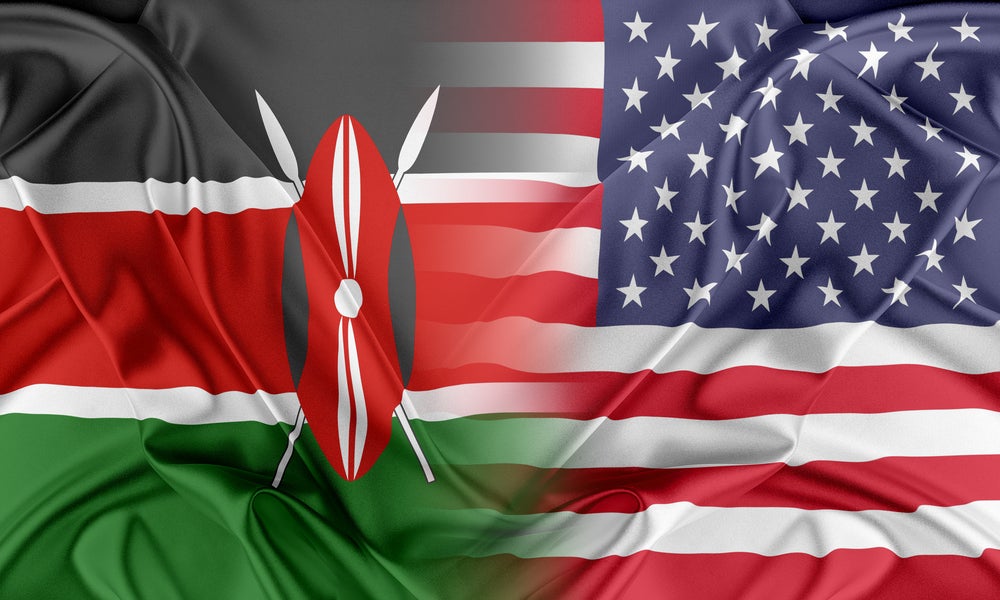
US apparel import volumes jumped in January as retailers brought in extra inventory before Asia’s Lunar New Year shut-down. But compared with the same month last year, declines were seen in seven of the top ten supplier countries – with the biggest double-digit drop seen by China.
US apparel companies usually import extra merchandise ahead of China’s Lunar New Year celebrations, which began this year in late January. And the latest figures from the Department of Commerce’s Office of Textiles and Apparel (OTEXA) show the volume of US apparel imports from all sources jumped 21.6% month-on-month in January to 2.31bn square metre equivalents (SME).
However the figures also show a drop of 11.2% in volume against January last year, and an 11% drop in value terms year-on-year to $6.76bn.
In terms of individual supplier countries, seven of the top-ten recorded a year-on-year decline in January, with China booking the biggest drop. China remains the largest supplier of apparel to the US, but saw shipments fall 25.1% year-on-year during the month to 827m SME. However, imports were up 22% month-on-month from the 678m SME recorded in December.
The second-largest supplier, Vietnam, booked a year-on-year decline of 2.3% to 393m SME. This compared to growth of 9.68% in December.
See Also:
Bangladesh, ranked number three in the top-ten US apparel supplier league table, saw its exports increase 10.5% year-on-year in January to 219m SME, while Cambodia’s shipments were up 8.2% year-on-year to 103m SME. Pakistan was the only other country into the top ten to record an increase, up 12.5% to 59m SME.
How well do you really know your competitors?
Access the most comprehensive Company Profiles on the market, powered by GlobalData. Save hours of research. Gain competitive edge.

Thank you!
Your download email will arrive shortly
Not ready to buy yet? Download a free sample
We are confident about the unique quality of our Company Profiles. However, we want you to make the most beneficial decision for your business, so we offer a free sample that you can download by submitting the below form
By GlobalDataOf the remaining top-ten supplier countries, El Salvador reported the second-largest year-on-year decline of 15.9% to 42m SME. Mexico, meanwhile, recorded a drop of 8.8% to 57m SME and Indonesia a decline of 4.9% to 106m SME. Honduras saw shipments slide 2.95% year-on-year to 58m SME, and India by 1.1% to 105m SME.
Meanwhile, total US textile and apparel imports in January fell 9.01% year-on-year to 5.69bn SME, and were also down in value terms by 10% to $8.95bn. Textiles alone recorded a decline of 7.5% to 3.38bn SME, and in value terms a drop of 9.1% to $2.2bn.
Nine-year overview
Taking a broader look at the data over a nine-year period from 2010 to 2019, Vietnam is the only country in the top ten to have seen a steady increase in import volumes to the US, growing from 1.91bn SME in 2010 to 3.95bn SME in 2019 – its share of total imports rising from 7.72% to 14.26%.
China’s imports have fluctuated over this period, from 10.4bn SME in 2010, falling to 9.74bn SME a year later, before reaching a peak of 11.38bn SME in 2015. Shipments dipped again in 2016 to 11.17bn SME, and last year dropped to 11.08bn. The country has lost marginal US apparel market share, from 41.98% in 2010 to 39.93% in 2019.
Indonesia, Mexico, El Salvador, Honduras and Pakistan are all exporting less to the US now than they were nine years ago. Cambodia, India and Bangladesh, meanwhile, are exporting more.
Cambodia has increased its exports to the US from 947.11 SME in 2010 to 1.04bn last year, maintaining a relatively stable share of the US apparel market at 3.8%. Bangladesh has grown its exports from 1.61bn SME to 2.01bn SME, improving its market share from 6.5% to 7.25%.
Facts behind the Figures
Despite a 5.06% year-on-year drop in shipments from China in 2019, the country still reigns supreme, reporting total US imports of 11.08bn SME for the 12-months from January to December.
This is almost three times that of its closest competitor, Vietnam, which recorded a total of 3.96bn SME for 2019. China’s shipments to the US are also five times as big as those of third-largest supplier Bangladesh, and equal to the combined total of the next seven largest suppliers on the top-ten list.
However, the latest figures from OTEXA continue to suggest industry buyers are opting to diversify their sourcing away from China in response to the ongoing trade war with the US.
Most of China’s clothing and footwear imports into the US are subject to additional tariffs – although these have now been reduced to 7.5% after the US and China reached agreement on a Phase One trade deal. Tranche 4 tariffs on goods imported from China were cut in half from 14 February, while China has confirmed it is also halving duties on some US imports.
South and Southeast Asian countries appear to be the favoured alternatives for replacing lost production in China, at least in the immediate term.
Meanwhile, Bangladesh has largely continued to build momentum as a low-cost sourcing destination. Since the collapse of the Rana Plaza building in April 2013, two major industry-backed remedial plans, together with one supported by the government, have worked to resolve issues over safety and worker rights, including the closure of some garment factories.
Manufacturers are being urged to move away from traditional volume production and focus instead on meeting the demand for value-added products in order to secure more business.
However, the country still struggles with infrastructure problems, widespread corruption, insufficient power supplies and reliability, and slow implementation of economic reforms. Poor working conditions remain an issue in the country’s textile factories. In April last year, fires broke out at commercial properties in two separate incidents.







